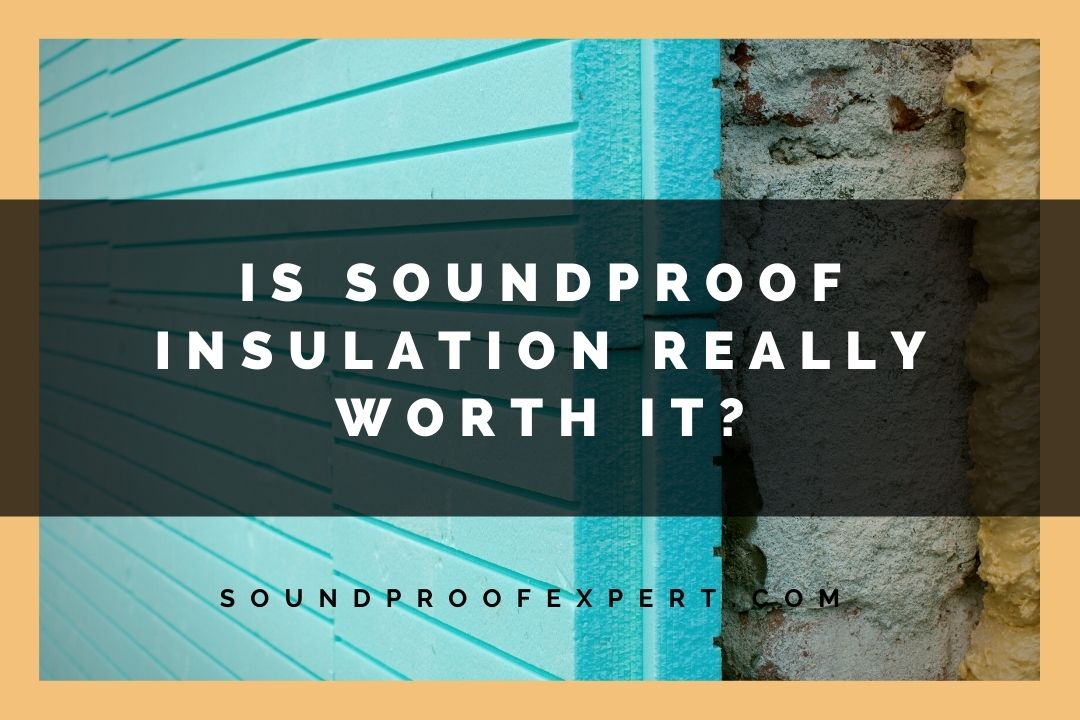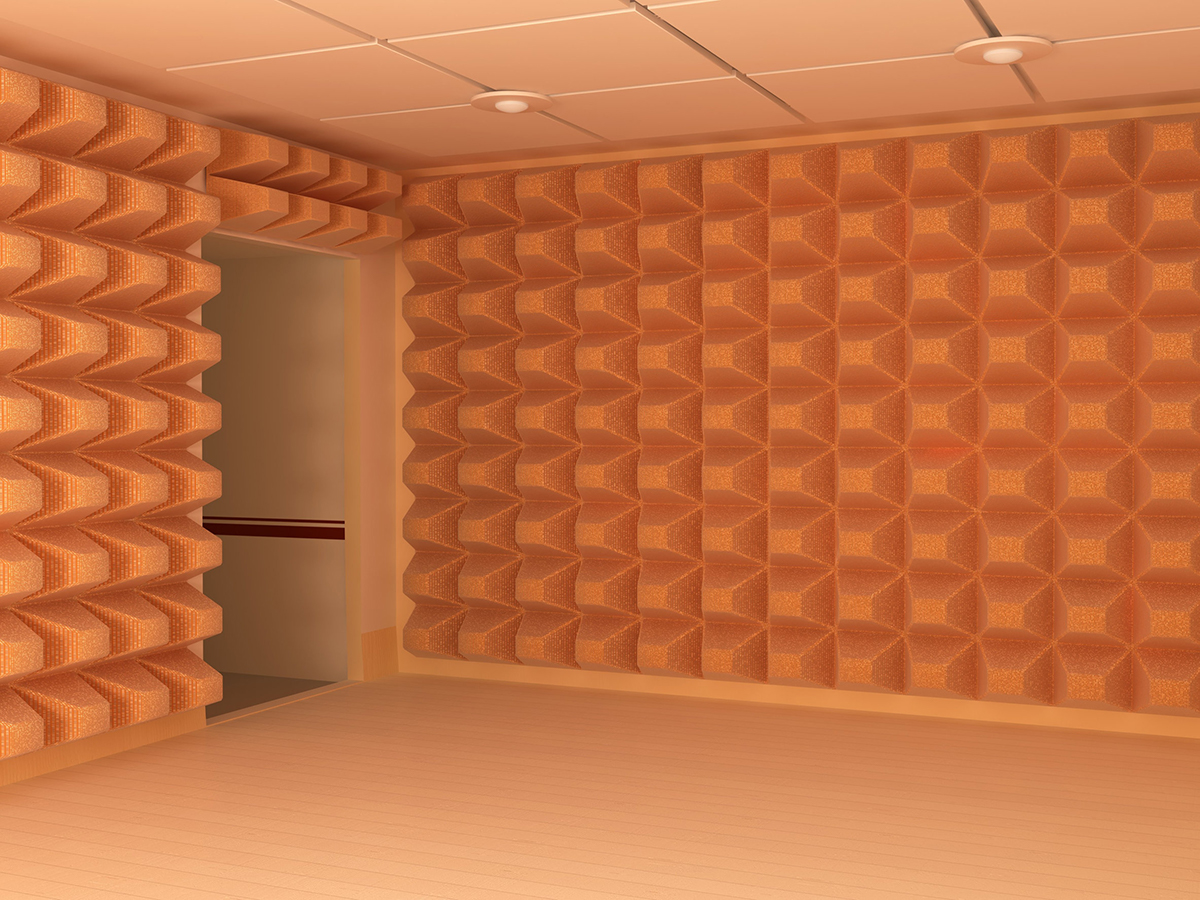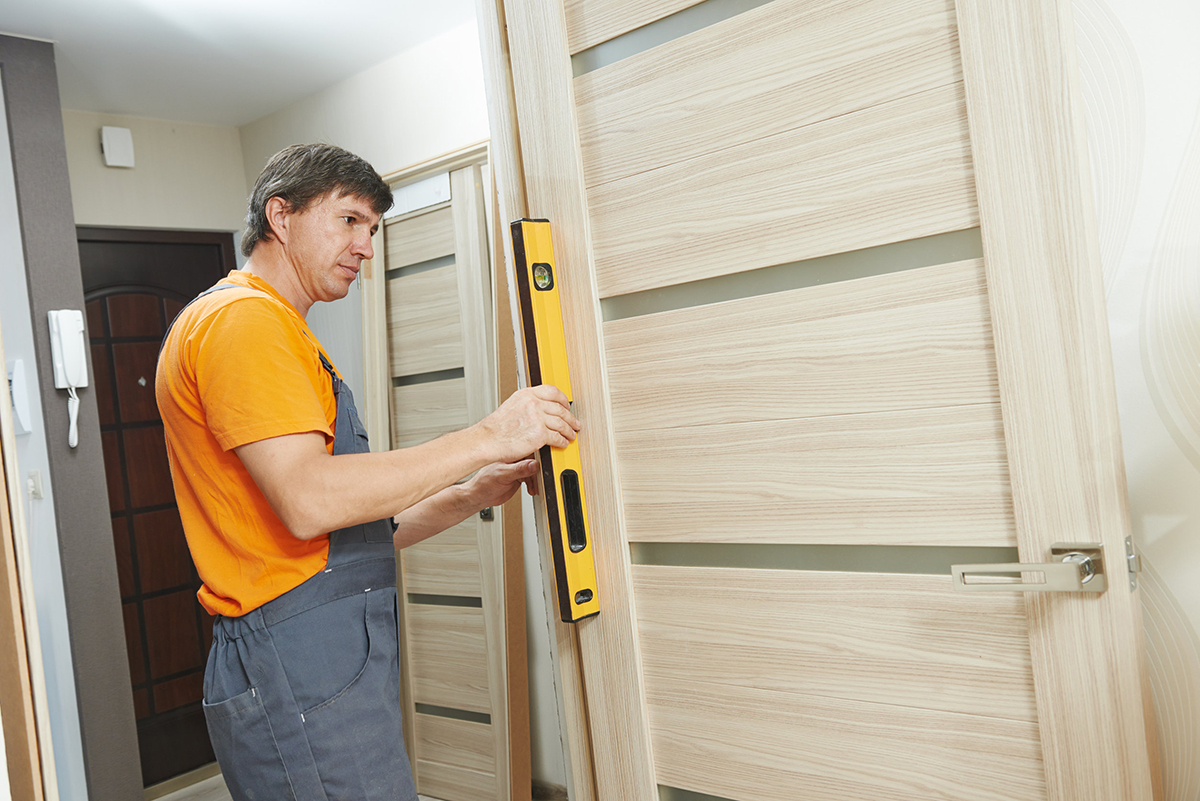
Maybe you’re tired of hearing the neighbors or traffic sounds, or you want to soundproof a room so you can play guitar without disturbing the neighborhood. You’ve heard about soundproof insulation, but is it worth the extra expense?
Soundproof insulation, if installed correctly, can reduce the amount of noise entering a room. However, along with adding insulation, you should take steps to keep and absorb noise. If you are hesitant about the additional expense, start with the reduction and absorption of noise.
Soundproof insulation is more expensive, and before you plunk down your hard-earned cash (or debit card), you need to know what the insulation can and cannot accomplish. In this article, you will learn what soundproofing can and cannot do and how to quiet your room by addressing where sound is entering the space and keeping it from bouncing around the room.
What Is Soundproofing?
Soundproofing, or sound isolation, stops irritating outside noise from entering your space and keeps loud sounds inside your home, apartment, or room from escaping and bothering your family and neighbors.
To soundproof a space, it is necessary to stop the mechanical energy of sound waves. This can be done by blocking, reflecting, or absorbing the waves. Mass, as in thicker walls, slows down the transmission of sound because the waves have to work harder. Add enough mass to a wall, and the sound will run out of energy to continue.
However, it is not feasible for homeowners to build walls thick enough to block sound. So many of them turn to insulation. If insulation can block heat or cold, it should be able to block sound as well, right?
Not necessarily.
Heat travels from high-temperature spaces to lower-temperature ones. During harsh winter months, the warmth inside a structure will try to leave, and in the summer, it tries to enter. Heat flows through conduction, convection, or radiation.
To stop conduction and convection, insulation has a high ratio of empty space to solid material with minimal movement. Convection is reduced further by self-contained air spaces.
Why Regular Insulation Doesn’t Stop Sound Well?
Regular insulation doesn’t stop sound well because sound is a type of mechanical energy created through vibration. So to prevent sound from traveling, you must stop the energy of the vibrations.
The empty spaces in insulation trap warmth, but they do little to stop sound waves. Instead, they help transmit the sound waves coming from one side of the wall to the other, which allows them to continue to the other side. Therefore, soundproof insulation needs to absorb or soak up sound energy. In addition, it should dampen the sound by reducing its vibrations.
To absorb the sound, sound insulation includes some rubbery material to soak up sound waves and a solid structure to reduce vibrations.
Why Sound Insulation Is Difficult?
Insulating a space for sound is difficult even with sound insulation because noise is difficult to block out completely. Soundwaves are much longer than light waves, and they can bend, making it easier for them to get in tiny openings and travel through solid materials.
Practically this means that soundproofing cannot be done simply by installing insulation along the wall or in the ceiling. Instead, it is best done in the initial construction of a structure because of the unique challenges of retrofitting. For example, adding an additional layer of drywall requires extending electrical outlets, and if the room has windows, reworking the molding.
Creating an air space between the two drywall layers shrinks the room even more. And don’t forget that the ceiling will also have to be lowered.
This doesn’t mean sound insulation won’t lower the amount of noise entering the room. But by itself, it won’t keep all the noise out. For that, you would need to make structural changes to the room—and still use soundproof insulation.
How Do You Soundproof a Structure?
In principle, the best technique to soundproof a room is to create a smaller room within it and seal it off from the outside world. This is also known as acoustic decoupling or “room inside a room.”
Each room is constructed of heavy and solid materials. However, the two rooms cannot be in direct contact, or sound can flow through. Instead, small clips (such as Resilient Sound Isolation Clips or WhisperClips) are used to support the inner space, and sound-absorbing material is used to line the walls.
Since that is not possible, soundproof insulation is the next best option.
A common way to measure sound is by STC (Sound Transmission Class).
| STC Measurement | What Can Be Heard |
| 25 | Everyday speech easy to understand |
| 30 | Loud speech can be understood |
| 35 | Loud speech can be heard but not understood |
| 40 | Loud speech barely audible |
| 45 | Loud speech hard to hear |
| 50 | Loud speech is not audible |
| 60 | Most sounds blocked |
A luxury hotel will design its rooms so that the STC is close to 60.
Let’s look at the typical STC measurements for insulation.
| Construction and Insulation | STC Rating |
| 2 by 4 interior wall with ½” (1.27 cm) drywall | 34 |
| Same wall with fiberglass insulation | 39 |
| Adding sound-rated insulation | 45 |
| 1 1/2“ (3.81 cm) metal studs with ½” (1.27 cm) drywall | 34 |
| Add sound-rated insulation | 47 |
| 1 ½“ (3.81 cm) metal studs and 5/8” (1.58 cm) drywall | 49 |
Adding sound-rated insulation increases the rating by another 6 points. Although this rating doesn’t correspond precisely with dB levels, our ears interpret a 10 dB increase or decrease as twice as loud or twice as quiet. So sound-rated insulation by itself, along with taking additional steps, can reduce the sound level of a room.
Additional Steps to Soundproofing a Room or House
Whether you decide to use soundproof insulation or not, you should take additional steps to reduce the amount of noise coming into the house. The goal is to reduce the level of noise coming into a space and absorb what does come in.
The first step is to address the sources of noise entering your space. You should walk through your room (or rooms) step by step, locating every potential entry point for sound and doing all you can to block that path.
- Check your doors and windows to make sure they shut tightly.
- Check the seals and caulk or use draft excluders as needed.
- Double or triple windows may be helpful, but only if they have a large air gap and are well sealed.
- If you have a chimney not in use, block it up if you can do so safely.
- Replace hollow-core doors with solid ones.
After you’ve decreased incoming noise as much as possible, look at ways to increase the absorption of sound waves.
- If you have wooden floors, add rugs.
- Use wall hangings–tapestries or blankets. Add more cushions on your couch.
- Use solid, heavy curtains that stretch to the bottom and seal off as much of the window area as reasonable.
- Thermal curtain linings and blackout curtains (intended to prevent heat loss and darken rooms at night) can significantly increase sound insulation.
People who complain and say that soundproof insulation doesn’t work hang the insulation and think that will take care of the problem. However, unless they build a room in a room, sound reduction and absorption.
Keep in mind that as you decrease the sound coming into the house or room, the more you will become aware of noises inside the room that were inaudible due to outside noises. Suddenly the refrigerator hums loudly, your central air or heat system sounds louder, and you’ll realize how loud the ticking of a clock can be.
Bottom Line
When it comes to soundproof insulation, the question is not if it works, but if you are willing to take the extra steps to reduce and absorb sounds. Unless you take those, the additional cost of soundproof insulation won’t be worth it.


